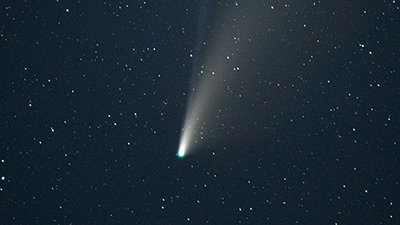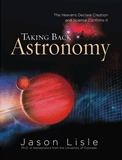The Tale of a Comet
A camera on the Hubble Space Telescope has recently captured remarkable images of a comet breaking apart. This event has something important to say about the age of the solar system.
A camera on the Hubble Space Telescope has recently captured remarkable images of a comet breaking apart. While this comet phenomenon is normal and has been known for many decades, it is making news because Hubble (a space-based telescope) is producing several excellent images that NASA and the European Space Agency are allowing the public to view.
This comet (and its disintegration) has something important to say about the age of the solar system, and hence our coverage of the comet (called Schwassmann-Wachmann 3)—and its break up—is warranted.
Single-image shots taken by Hubble have been pieced together (into something like a time-lapse movie), and, in some detail, they show the comet breaking apart. According to AiG–USA astrophysicist Dr. Jason Lisle, “The Hubble telescope has provided extraordinary views of this cometary breakup that are far more detailed than would be possible with ground-based telescopes.” You can go to the CNN website and watch a 65-second “clip” of the comet as it shatters (see Hubble captures the shattering of a comet).
Dr. Lisle, a creationist with a Ph.D. from the University of Colorado at Boulder and who is developing AiG’s planetarium (being built inside the Creation Museum), describes comets as “balls of ice and dirt.” Most astronomers claim that they are the remains of the solar system’s formation some 4.5 billion years ago. Both creationists and evolutionists are in agreement that as comets circle the sun (in elliptical orbits), they heat up the closer they get to the sun. The heat (along with other processes) leads to a comet disintegrating over time. The question in contention is how much time?
Dr. Lisle noted that Hubble has shown other comets (such as Shoemaker-Levy 9) breaking up. He said that because this S-W3 comet in the news goes around the sun every 5.4 years, “it could not have lasted billions of years. It would have shed so much material at each pass around the sun that it could not last for millions—not to mention billions—of years. Also, the chances of us actually seeing comets breaking up in the evolutionist’s timeframe of billions of years would be very, very small—much like seeing the disintegration of one of the ‘Twelve Apostles’ rock formations in Australia last July”.
According to evolutionary theory, comets are supposed to be the same age as the solar system (about 4.5 billion years). Dr. Lisle concludes, however, that “there is no way S-W3 could survive much longer than about 100,000 years. In fact, some ‘sun-grazing’ comets are completely destroyed in just one observed pass around the sun. This is certainly consistent with their relatively recent creation—as opposed to the billions-of-years view. The bottom line: the disintegration of comets indicates the universe is very young.”
Dr. Lisle added: “In fact, most secular astronomers agree that comets don’t last billions of years, and have thus proposed what’s called an ‘Oort cloud’ [see More Problems for the ‘Oort Comet Cloud’] to solve this problem. This alleged icy cloud far away from the sun supposedly produces comets. The hypothesis is that an icy mass is occasionally disturbed from its position in the Oort cloud, and is sent hurtling into the inner solar system to become a ‘new’ comet.”
“However, no one has seen this cloud,” observed Dr. Lisle. “Yet most evolutionists believe it must be there because they insist the solar system is billions of years old.”
Dr. Lisle concluded: “From a creationist perspective, comets remind us of the youth of the solar system. They fit in nicely with a universe just a few thousand years old, just as we’d expect from biblical chronology.”
Recommended Resources

Answers in Genesis is an apologetics ministry, dedicated to helping Christians defend their faith and proclaim the good news of Jesus Christ.
- Customer Service 800.778.3390
- © 2025 Answers in Genesis






